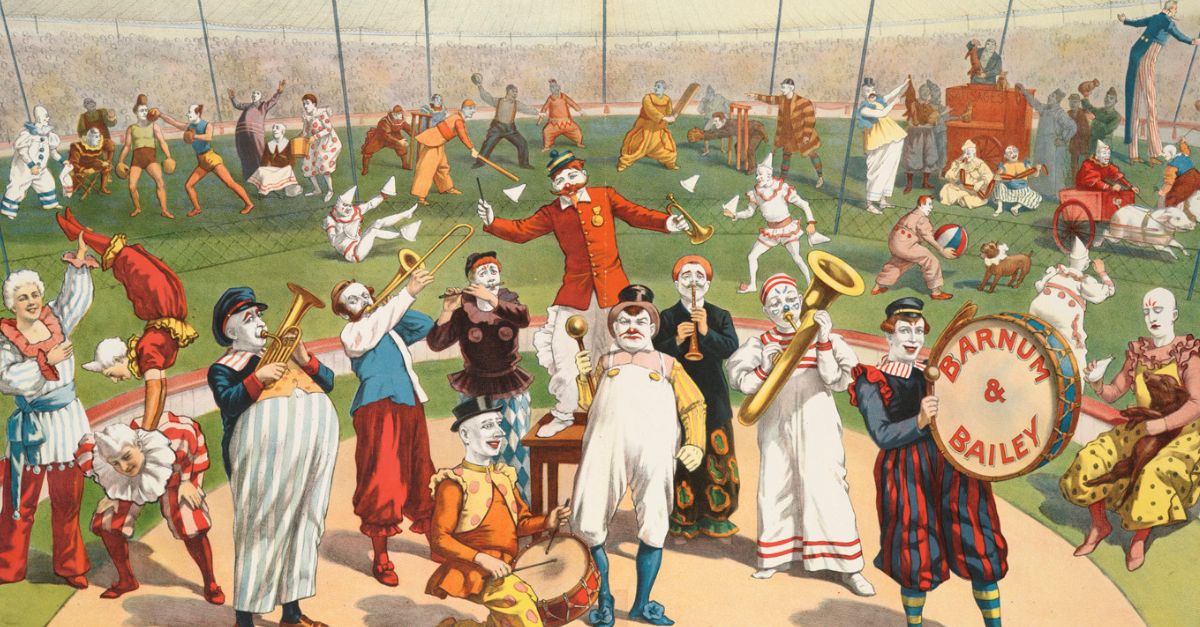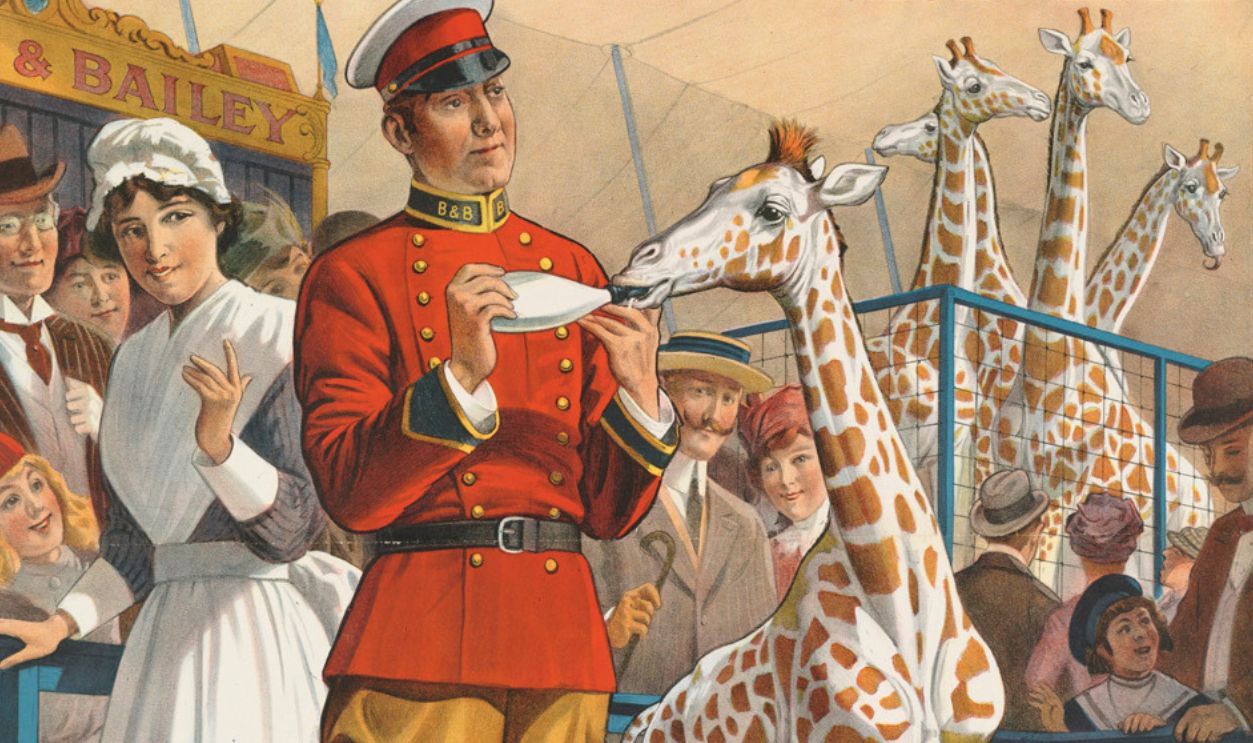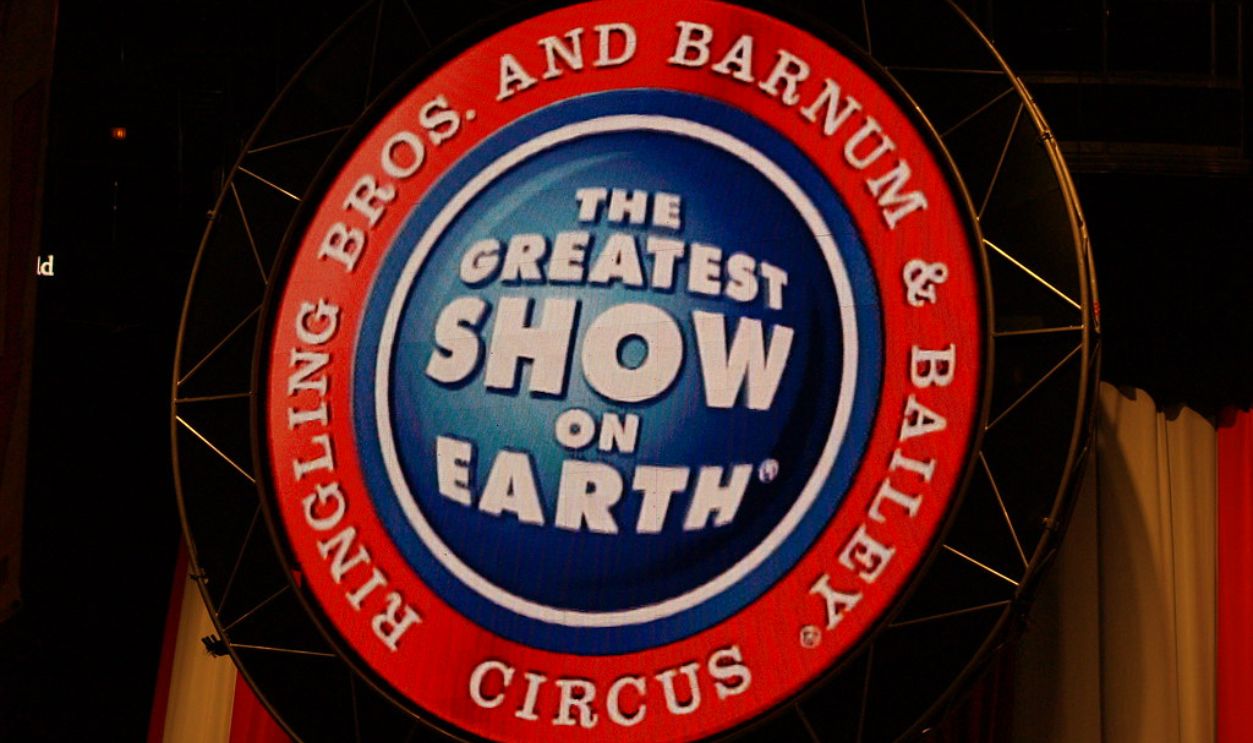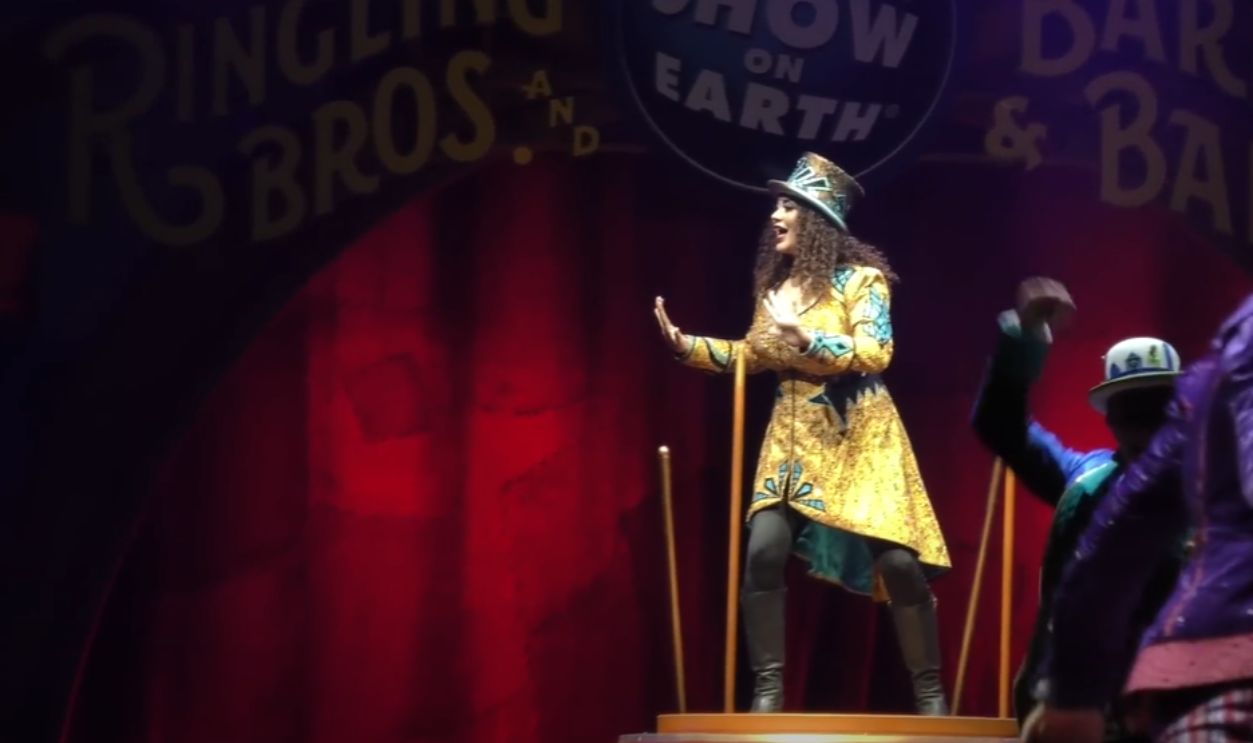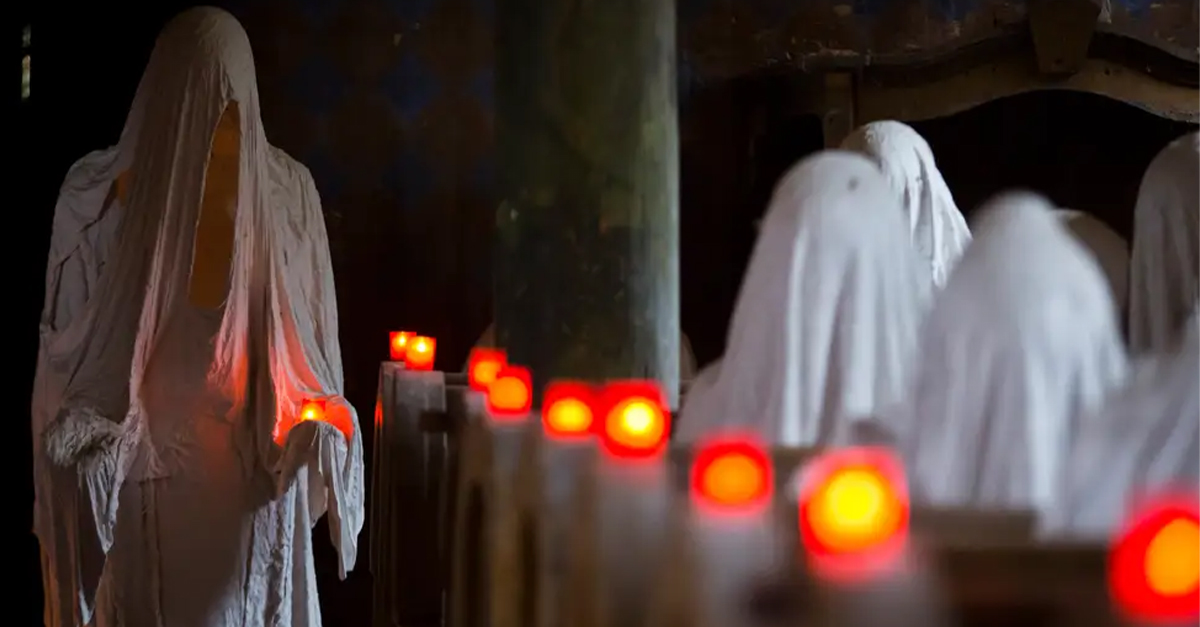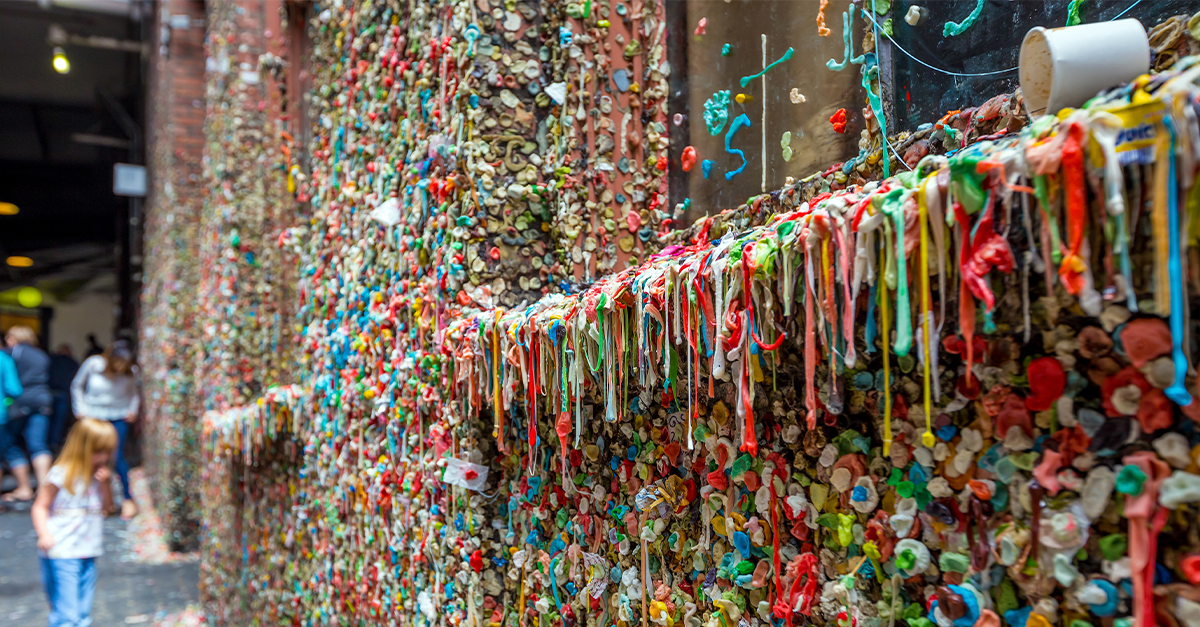The Infamous Traveling Circus
Ladies and gentlemen, let’s peek behind the curtain of the unique Ringling Bros. and Barnum & Bailey Circus. It has boggled audiences with death-defying stunts and mesmerizing performances, but some secrets are yet to be discovered.
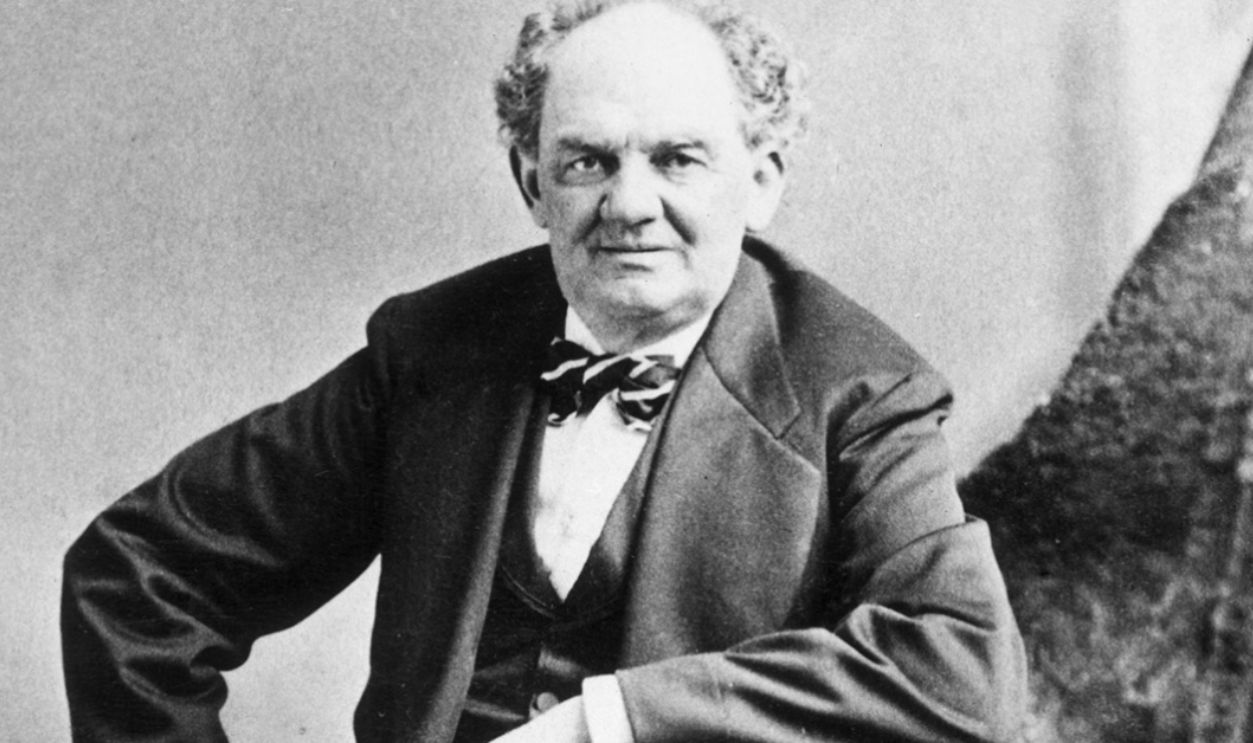
Humble Beginnings
The Ringling Circus began as a modest traveling show launched by seven ambitious brothers in Baraboo, Wisconsin. But before they came onto the scene, P. T. Barnum had been operating his own entertainment gigs since 1835. And it was 1871 when he entered the circus business.
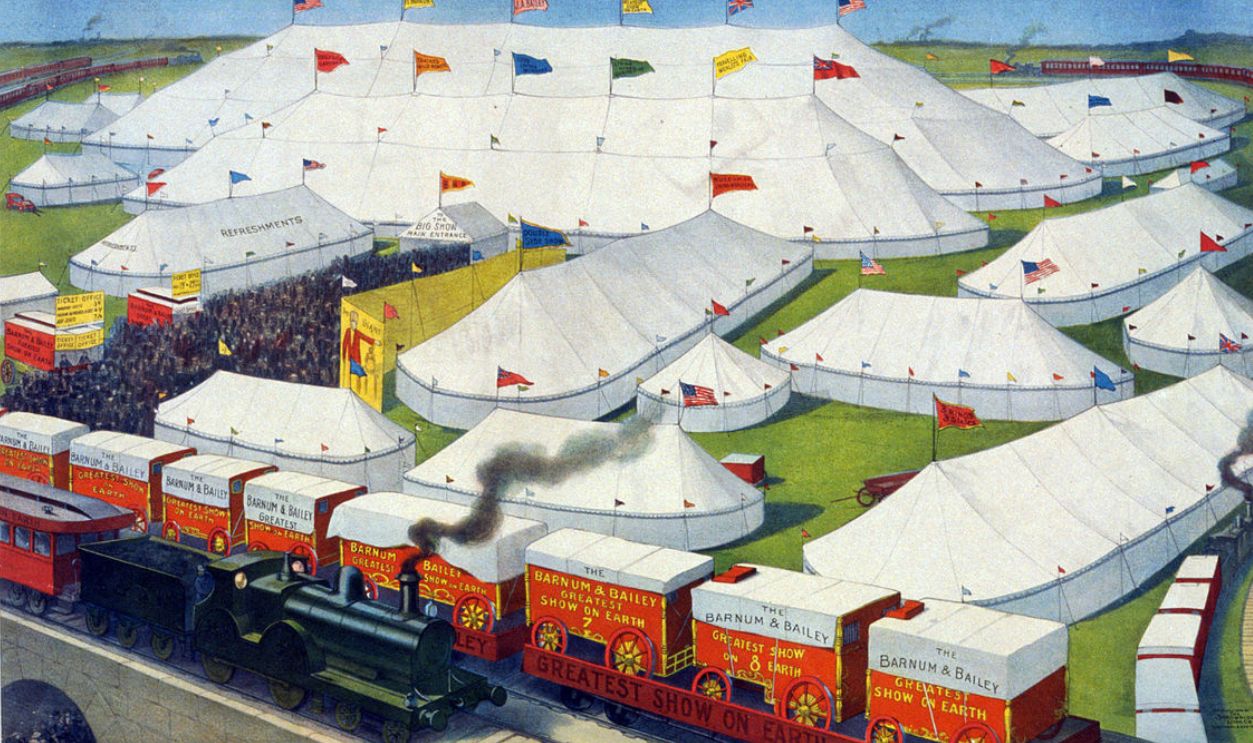 Brian0918, Strobridge Litho. Co., Wikimedia Commons
Brian0918, Strobridge Litho. Co., Wikimedia Commons
With Great Ambition
With just a small group of performers and homemade wagons, they traveled from town to town, putting on shows filled with magic tricks and music. Unlike the extravagant productions they would later become famous for, their initial performances were simple yet mind-bending enough to draw in curious locals.
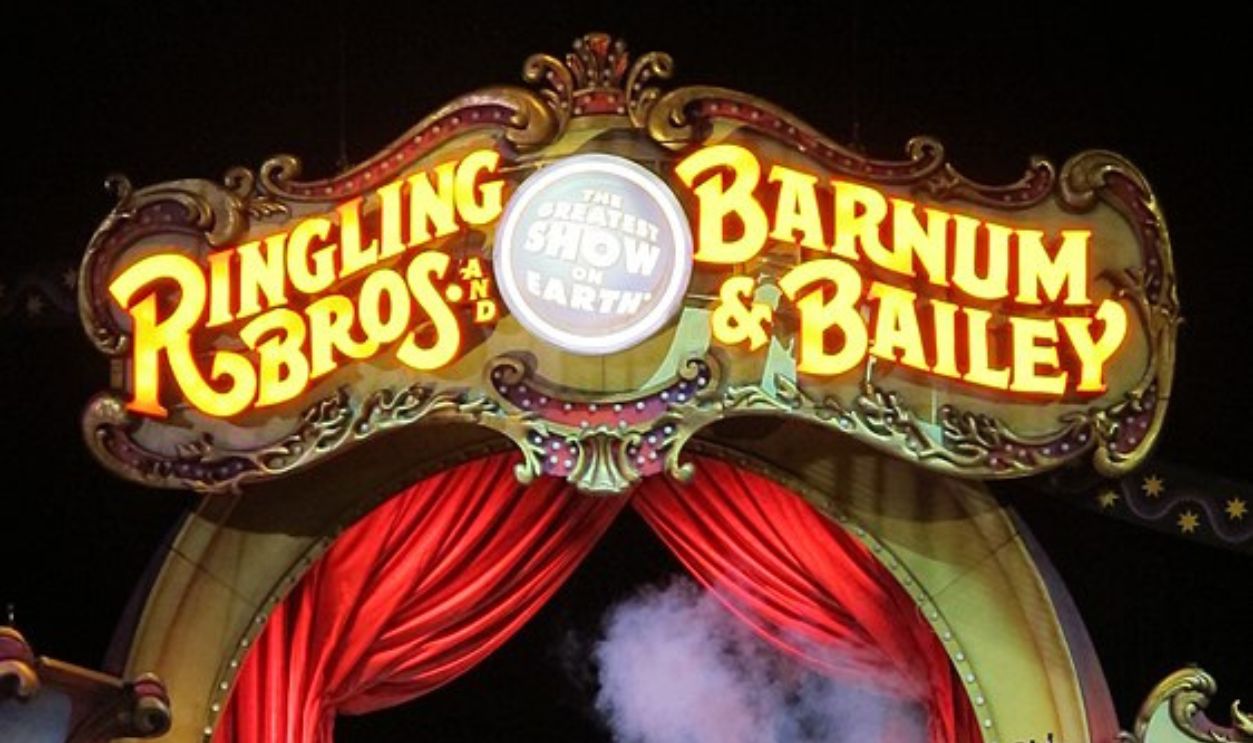 John VanderHaagen (jvh33), CC BY 2.0, Wikimedia Commons
John VanderHaagen (jvh33), CC BY 2.0, Wikimedia Commons
It Was All In The Family
The Ringling brothers—Al, Otto, Charles, John, and Alfred—were not just businessmen. They were deeply involved in every aspect of the circus. Each brother played an important role by managing logistics and performing the acts themselves. August and Henry occasionally helped out. Their combined efforts and close family bond was the glue.
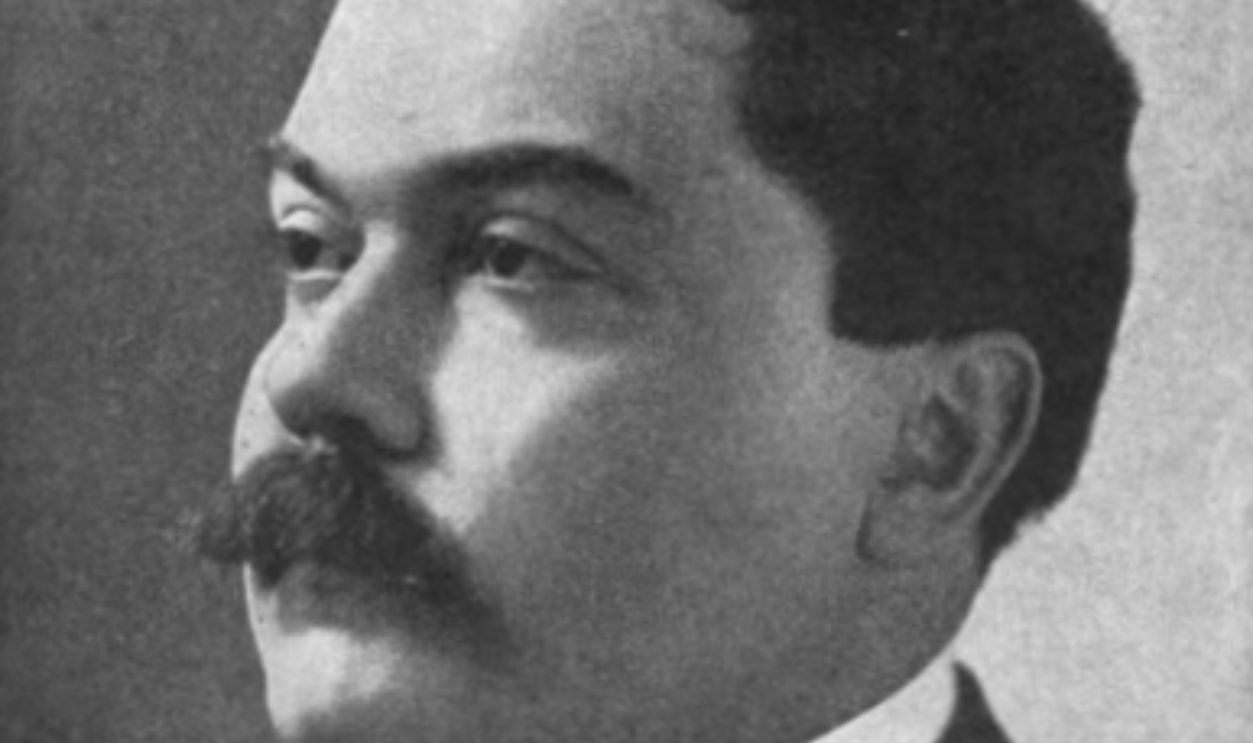 Unknown Author, Wikimedia Commons
Unknown Author, Wikimedia Commons
But Barnum’s Clever Marketing Was Everything
P.T. Barnum, the man behind Barnum’s Circus, was a showman unlike any other. He pioneered advertising strategies that were bold and sometimes outrageous. Barnum mastered the art of hype, as he promoted Feejee Mermaid and featured Jumbo the Elephant as the largest land animal.
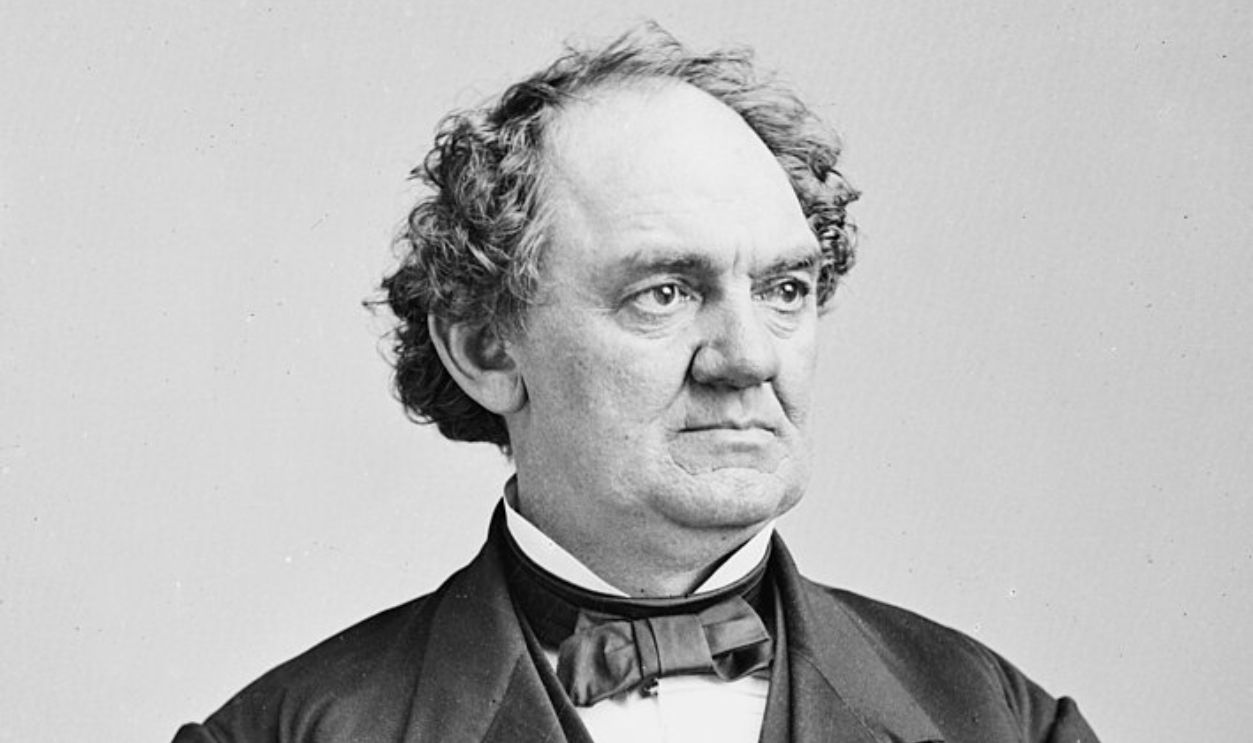 Brady-Handy Photograph Collection (Library of Congress), Wikimedia Commons
Brady-Handy Photograph Collection (Library of Congress), Wikimedia Commons
Starring Jumbo
Jumbo was the Barnum circus’ biggest elephant and its massive size ensured viewers would always come to watch a performance. It even led a parade of elephants over the Brooklyn Bridge to show it’s safe. However, the elephant was hit by a train and died in a tragic accident.
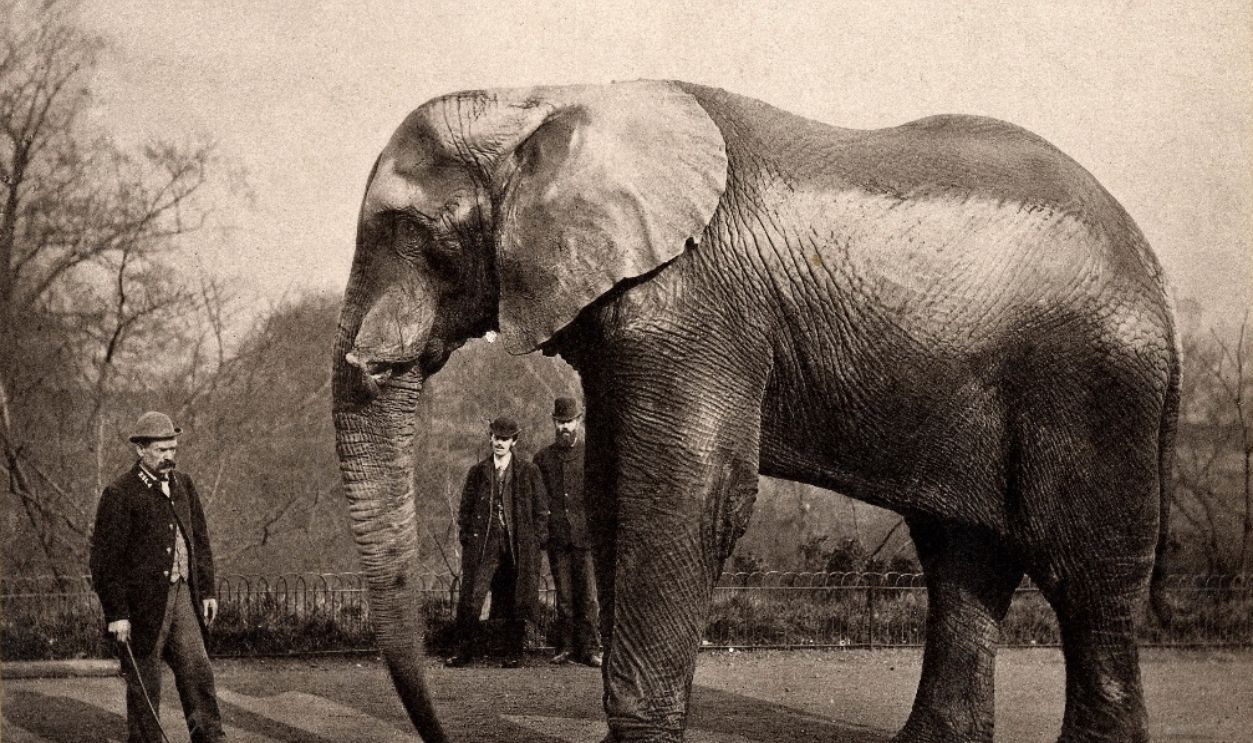 Edward Bierstadt, Wikimedia Commons
Edward Bierstadt, Wikimedia Commons
It Was Like A Traveling City
Ringling was a fully functional traveling city, as it required almost 100 train cars to transport its performers, animals, tents, and equipment. These trains carried everything needed to sustain the show, including training tools, kitchens that prepared meals for hundreds of staff, and portable housing for performers and animals.
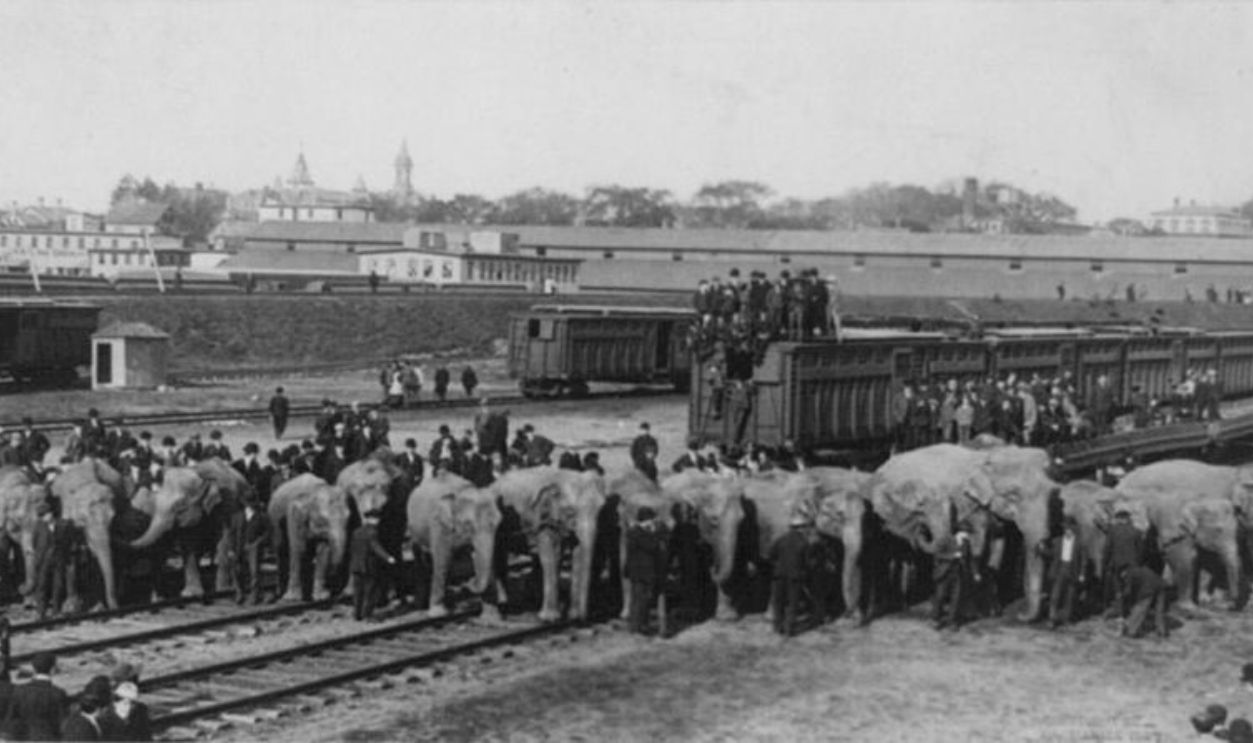 Glasier, Brockton, Mass, Wikimedia Commons
Glasier, Brockton, Mass, Wikimedia Commons
Performers Had A Secret Code
Behind the scenes of the glittering performances, circus performers communicated in a unique slang. This secret language allowed the crew to speak without outsiders and visitors understanding them. It was made of coded phrases and words designed to discuss logistics or warn each other of trouble.
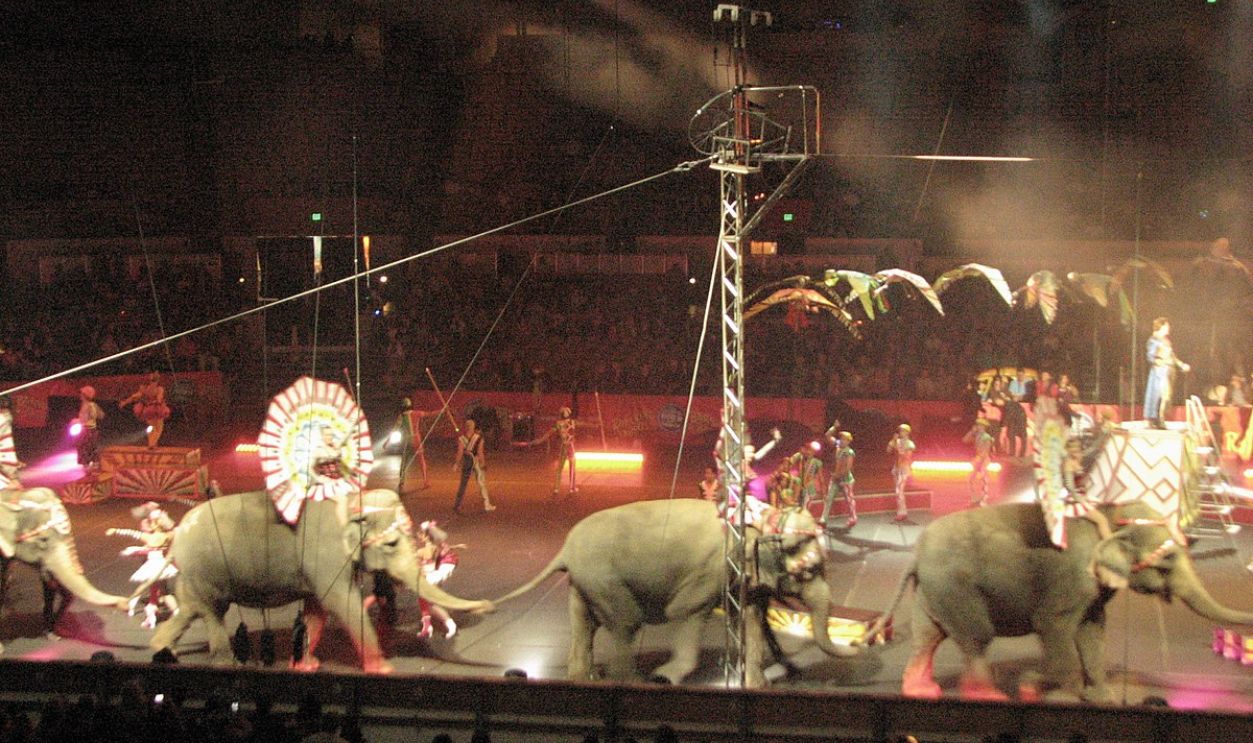 Bob n Renee, CC BY 2.0, Wikimedia Commons
Bob n Renee, CC BY 2.0, Wikimedia Commons
Pioneering Diversity
In the late 19th century, the circus was ahead of its time in promoting diversity. One groundbreaking example was William Henry Johnson, an African American billed as “Zip the Pinhead.” Although his act reflected the prejudices of the era, his inclusion marked an important step in breaking racial barriers.
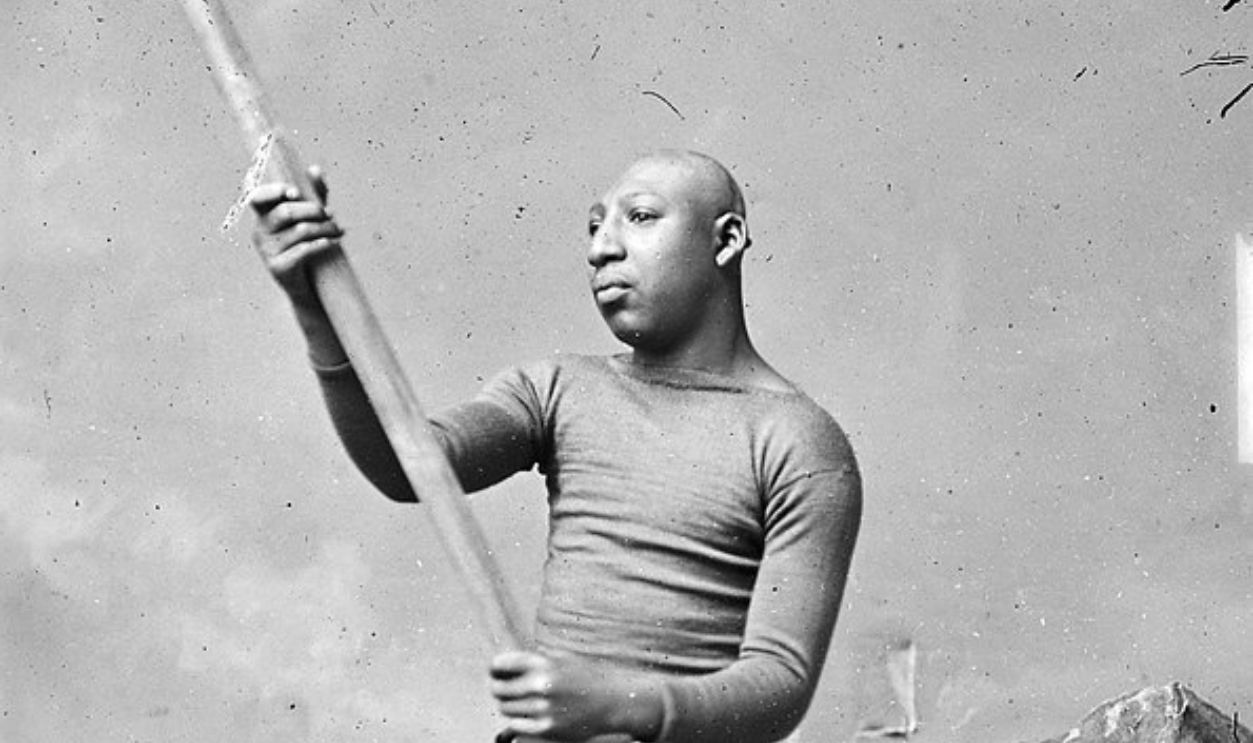 Mathew Benjamin Brady, Wikimedia Commons
Mathew Benjamin Brady, Wikimedia Commons
However, It Wasn’t Always Moral
Although some might argue he gave this man a job, he exploited him by displaying him as a man-monkey. As a matter of fact, he invented a gibberish language to market him as the missing link between man and apes. In today’s world, such acts would be punished by law.
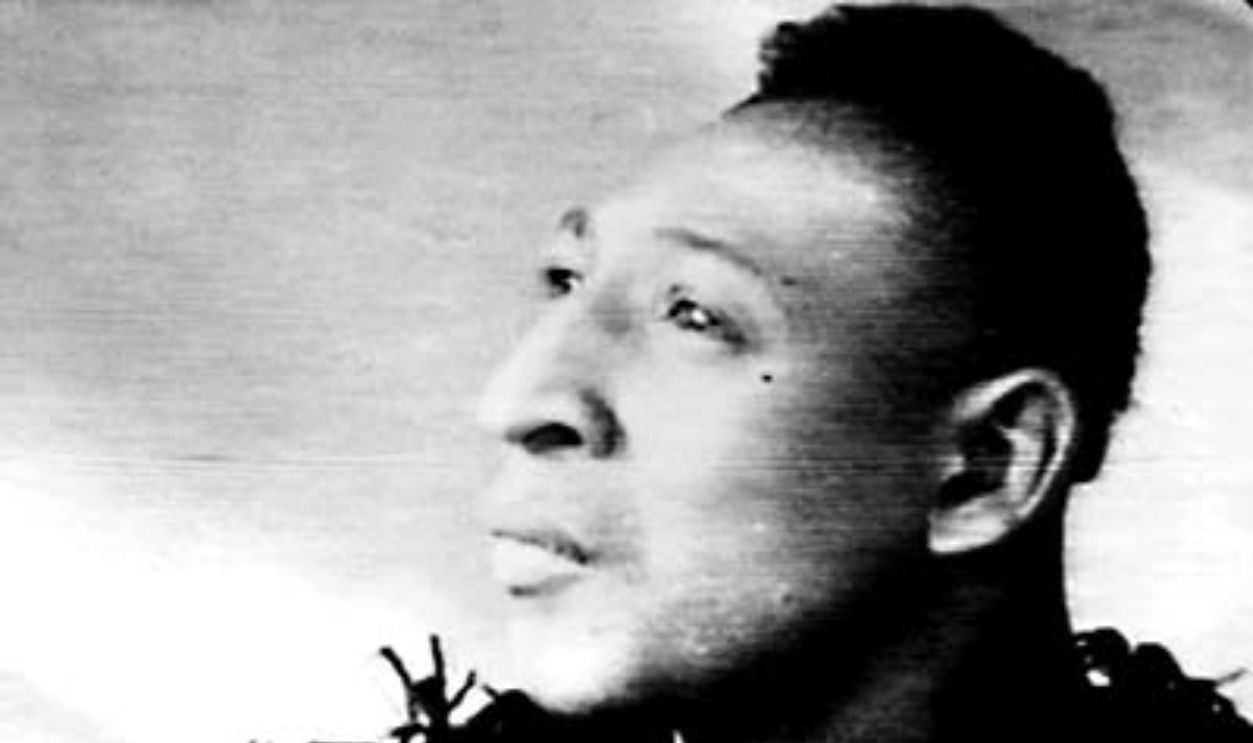 Unknown Author, Wikimedia Commons
Unknown Author, Wikimedia Commons
He Wasn’t The Only One
The circus also showcased talents from around the world, including Chinese acrobats and Indian animal trainers. By introducing audiences to different cultures, these efforts reflected the circus’ unique ability to unite people through the universal language of wonder and amazement.
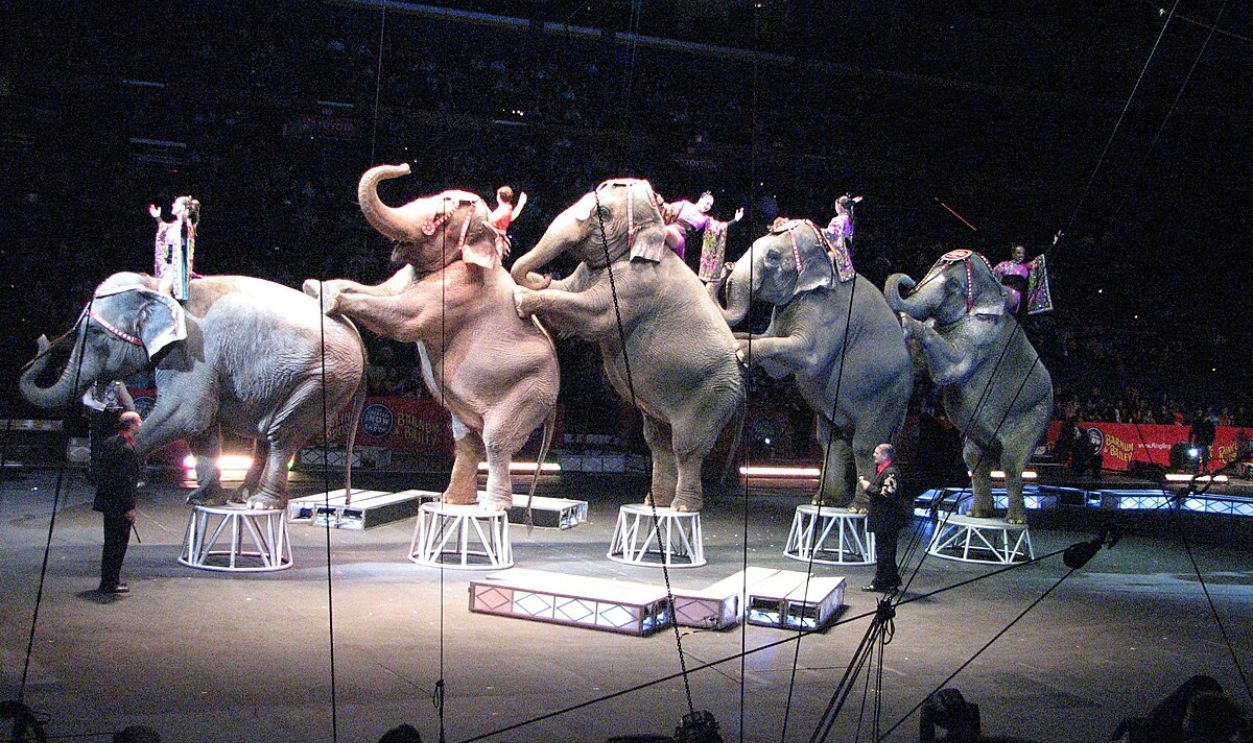 Amy n Rob, CC BY 2.0, Wikimedia Commons
Amy n Rob, CC BY 2.0, Wikimedia Commons
The Circus Continued To Seek Global Talent
To attract more fans, Barnum Circus scoured the globe to find the most extraordinary talent to create a truly international spectacle. Performers came from over 50 countries, including Russian trapeze artists and Italian jugglers that people willingly paid to enjoy. It was the ultimate entertainment.
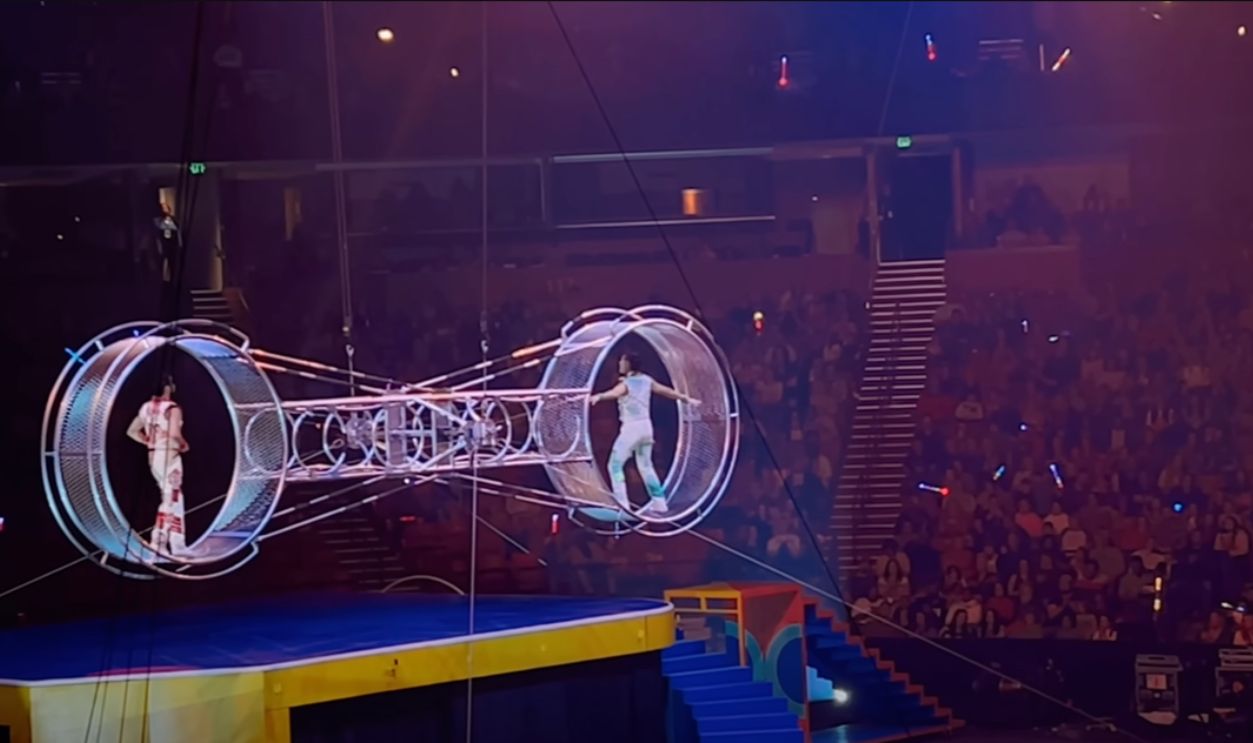 🎪Circus Show 2024|The Ringling Bros. Barnum & Bailey. Greenville, South Carolina by Verysweetify
🎪Circus Show 2024|The Ringling Bros. Barnum & Bailey. Greenville, South Carolina by Verysweetify
With Some Controversial Acts
P.T. Barnum’s career success often came at a moral cost. Today, we know he lied about most of the performers. He claimed one of his performers was Joice Heth, the former nurse of George Washington. When she passed on, it turned out she was half the age he claimed.
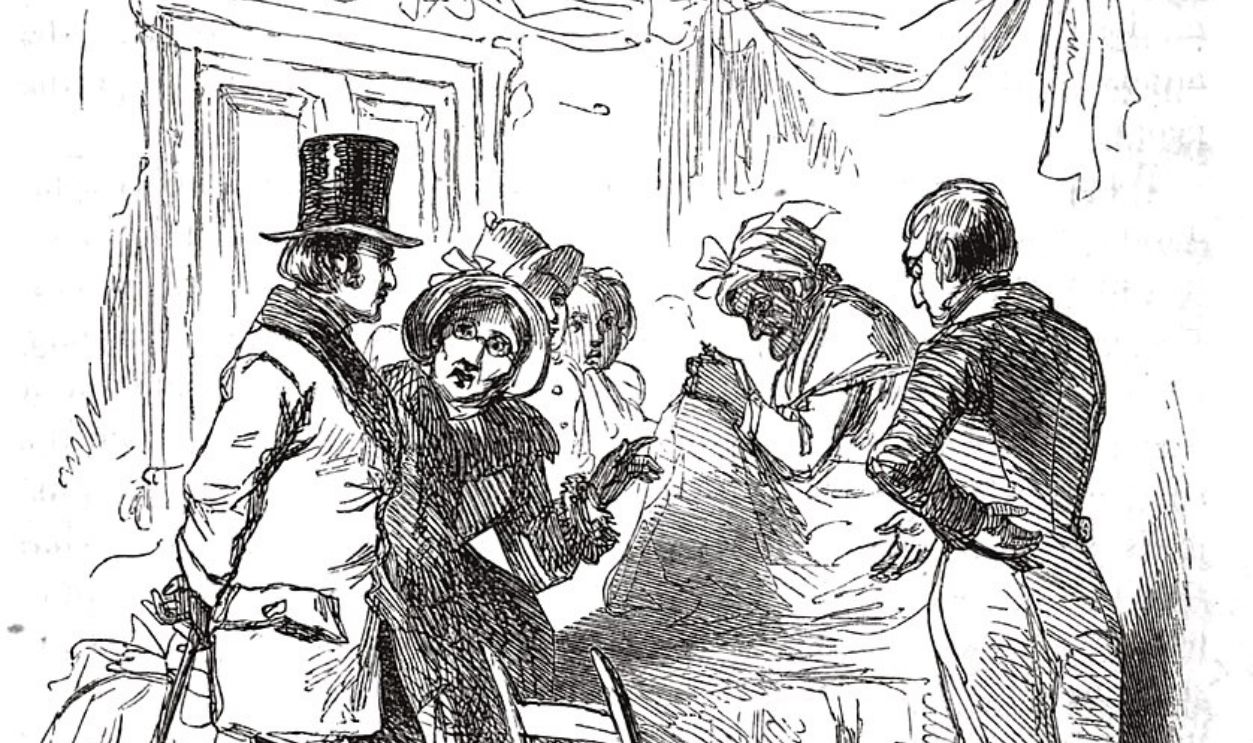 Unknown Author, Wikimedia Commons
Unknown Author, Wikimedia Commons
And Other Ethical Issues Leave Us Puzzled
Exploiting people with disabilities wasn’t an issue for Barnum. These included General Tom Thumb, the four-legged girl, the bearded woman, Prince Randian, Siamese twins Chang and Eng, and the Chinese giant. Many of these performers were featured in the 1932 movie Freaks.
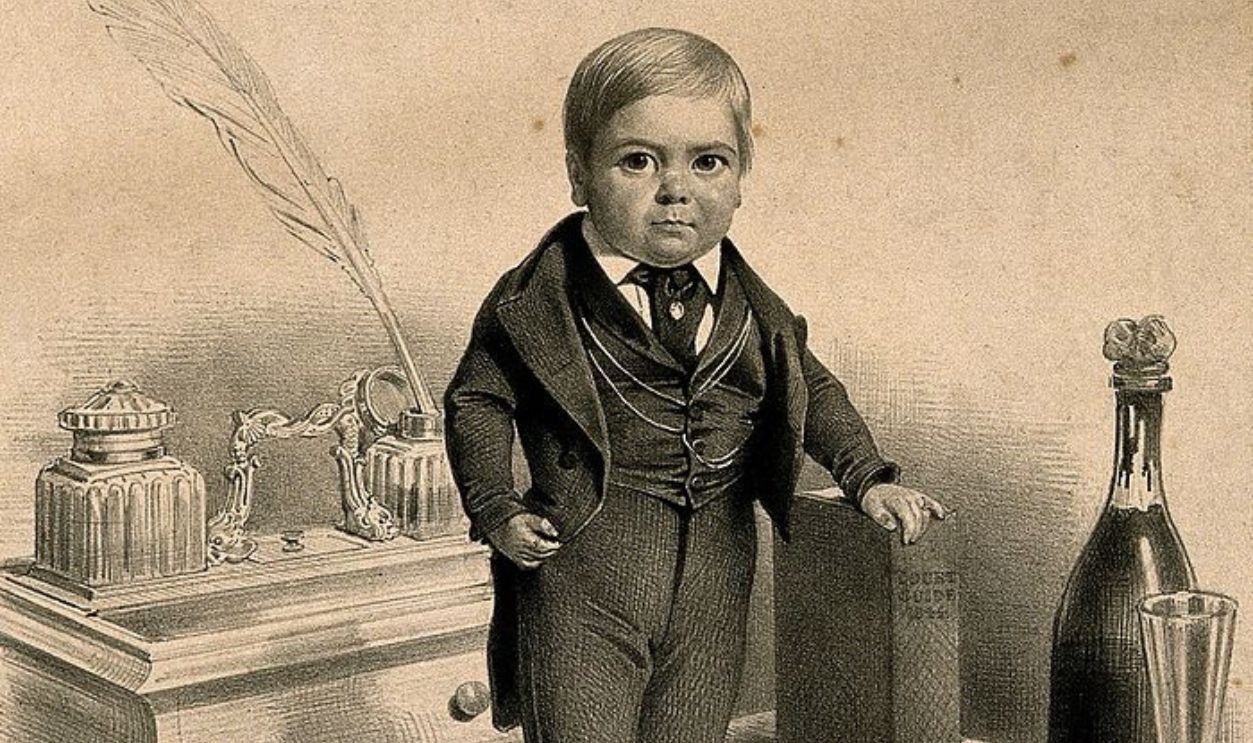 Baugniet 1844, CC BY 2.0, Wikimedia Commons
Baugniet 1844, CC BY 2.0, Wikimedia Commons
Although People Didn’t Think Much Of Them
Today, these actions will do more harm than good. However, back in the day, many people wanted to join Barnum’s show. During this period, these less privileged people could hardly make a living. Many of them went on to have families because of the money they earned with him.
A Merger Made The Circus Bigger
In 1907, the Ringling Bros. bought Barnum’s circus after he passed away but operated them independently. By 1919, they combined into one show under the banner of The Greatest Show on Earth. This merger brought together the creativity of P.T. Barnum and the organizational brilliance of the Ringling brothers.
The Big Cat Act
Clyde Beatty, one of the most talented animal trainers, brought an unparalleled spectacle to the Ringling with his legendary Big Cat Act in the 1930s. Beatty performed with more than 40 lions and tigers in a single arena, an astonishing feat of bravery and control.
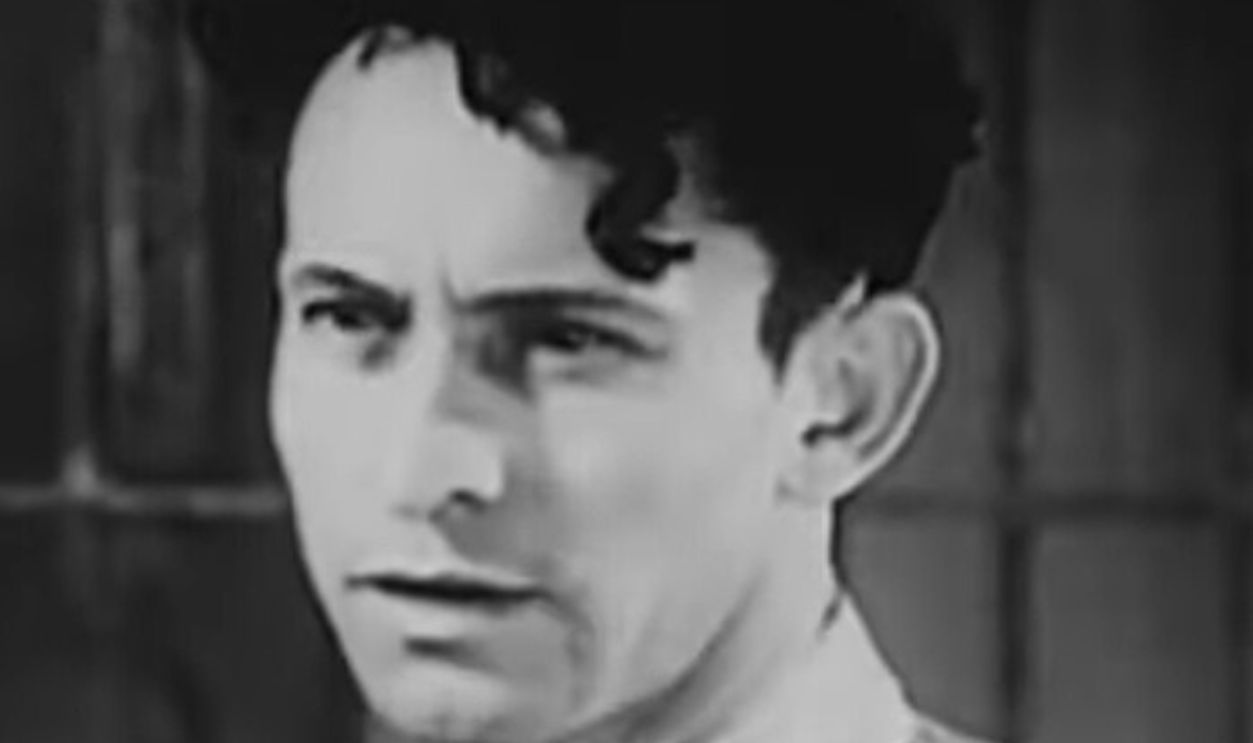 Mascot Pictures, Wikimedia Commons
Mascot Pictures, Wikimedia Commons
The Tent Fire Was A Disaster
One of the darkest chapters in the circus’s history occurred on July 6, 1944, when a fire broke out during a performance in Connecticut. The massive blaze, fueled by a tent waterproofed with a highly flammable paraffin and gasoline mixture, killed 167 people and injured hundreds more.
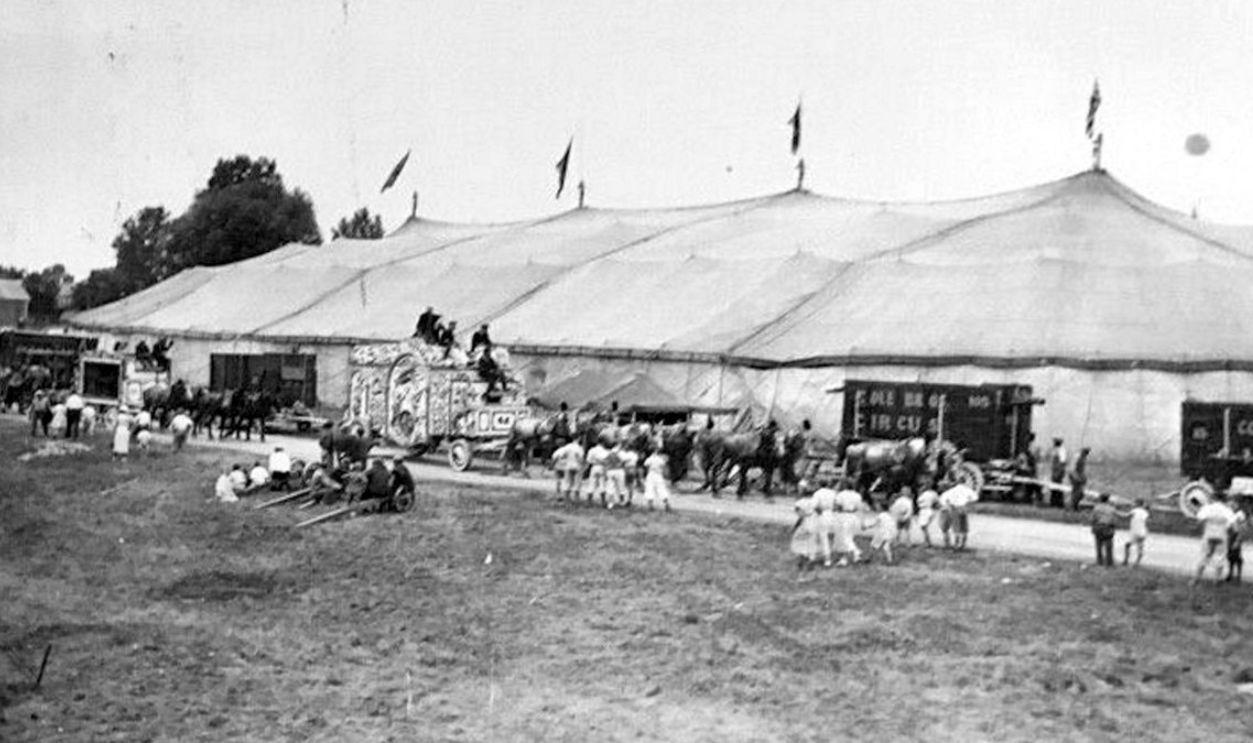 Self Scanned, Wikimedia Commons
Self Scanned, Wikimedia Commons
Then Tastes Changed
During the 1950s, audiences’ tastes shifted, and people weren’t that fond of circus performances. People would rather enjoy the cinema and TV, and operating costs increased. The Ringlings sold the circus for $8 million and immediately made a few changes.
Education Was Always A Priority
Since it was one of the biggest entertainment entities, the circus established the Ringling Bros. and Barnum & Bailey Clown College. It was an institution dedicated to training professional clowns as the original ones were becoming too old. The college taught aspiring clowns comedic timing and physical stunts.
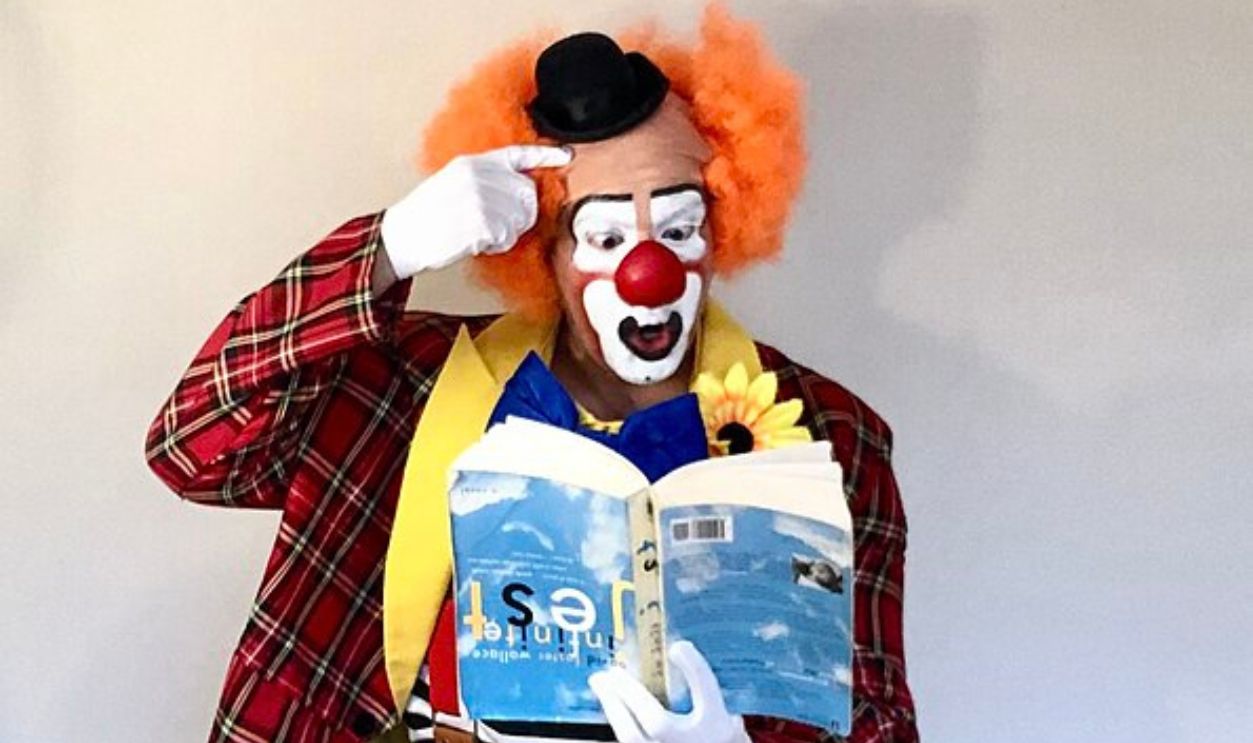 Splatstheclown, CC0, Wikimedia Commons
Splatstheclown, CC0, Wikimedia Commons
People Loved It
Graduates of the program joined the circus’s roster or found success in other areas of entertainment. Over its nearly 30-year run, the college produced over 1,500 clowns to preserve the art of clowning and to ensure its place in the modern circus.
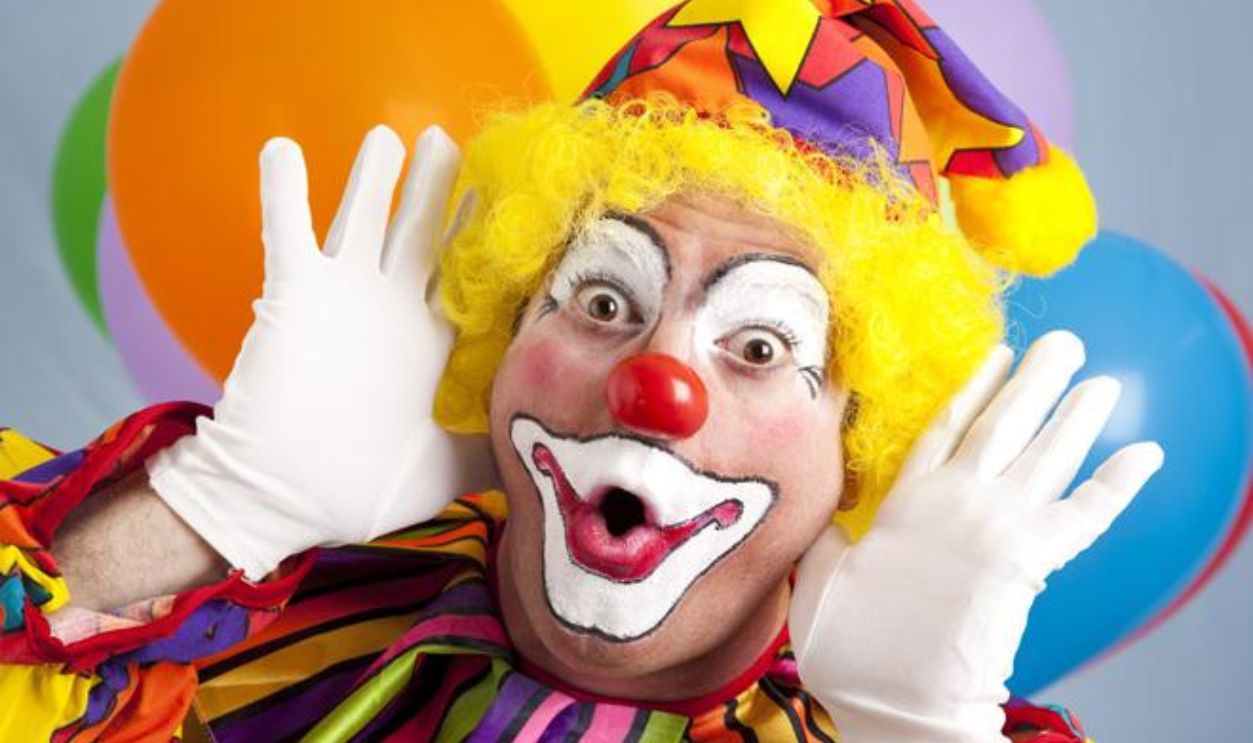 Laragiddingsofficial, CC BY-SA 4.0, Wikimedia Commons
Laragiddingsofficial, CC BY-SA 4.0, Wikimedia Commons
The World’s Largest Elephant Troupe
At its peak, Ringling owned more than 100 elephants. These animals were a cornerstone of the show, as they wowed people with their synchronized performances and sheer size. The circus bred and trained their elephants at their Florida-based headquarters to ensure the troupe remained a central attraction.
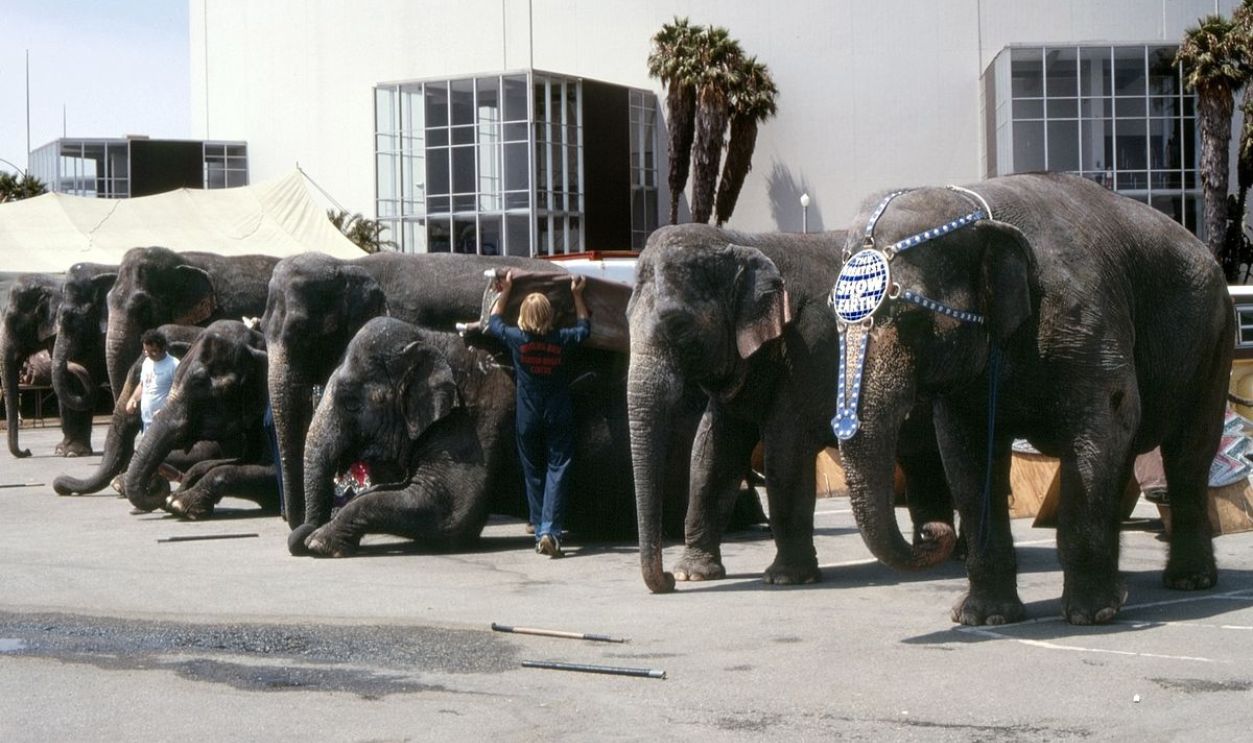 Tequask, CC BY-SA 4.0, Wikimedia Commons
Tequask, CC BY-SA 4.0, Wikimedia Commons
Hollywood Came Calling
The grandeur of the Ringling Bros. and Barnum & Bailey Circus inspired the 1952 classic film The Greatest Show on Earth, directed by Cecil B. DeMille and starring Charlton Heston. The film was a hit and won the Academy Award for Best Picture.
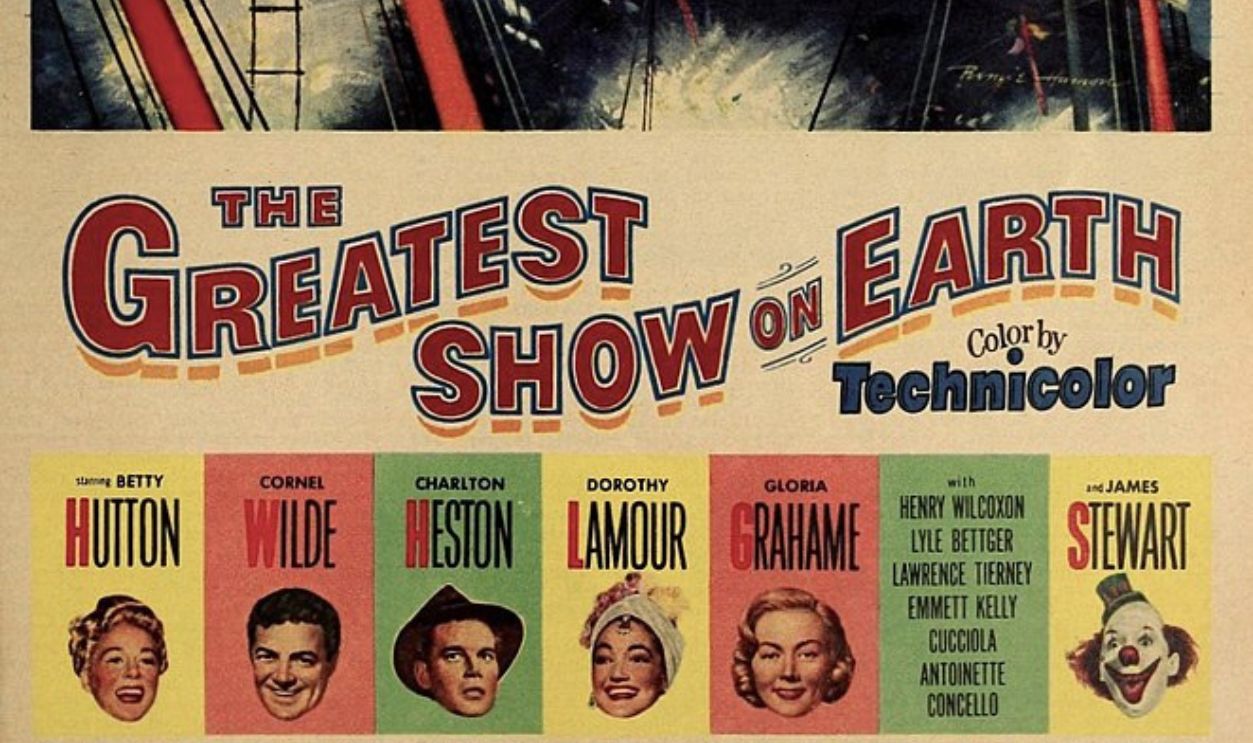 Paramount Pictures, Wikimedia Commons
Paramount Pictures, Wikimedia Commons
First Female Ringmaster
Over the years, Ringling has broken many barriers. Kristen Michelle Wilson became the first female ringmaster of the new Ringling in 2017 to symbolize the evolving nature of the circus. Her appointment was a bold statement of progress to demonstrate the circus’s commitment to celebrating talent, regardless of gender.
Things Weren’t Going Too Well
Although the circus stayed in operation, it struggled since the 1970s. The new owners opened the Circus World theme park, which was also the circus’ winter headquarters. By the 1990s, the rail company could no longer support the show’s train cars.
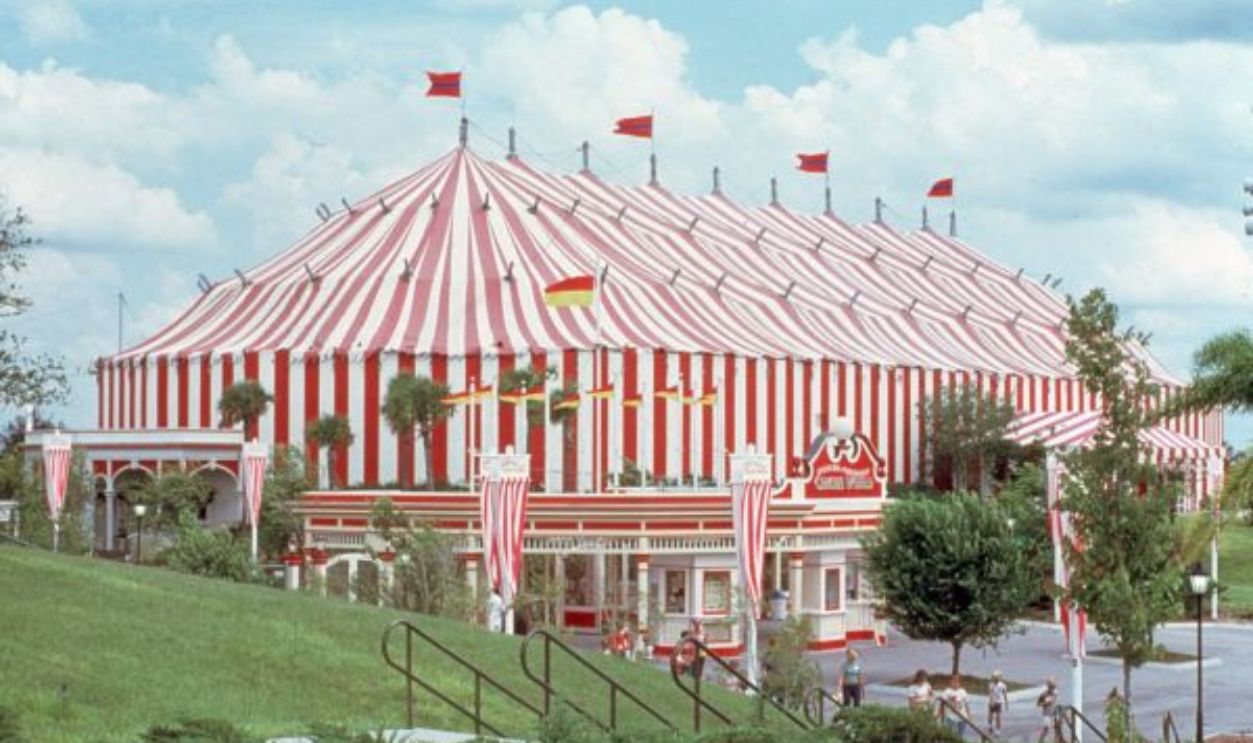 Florida. - Division of Tourism, Wikimedia Commons
Florida. - Division of Tourism, Wikimedia Commons
Animal-Free Performances
In a groundbreaking move, the circus eliminated elephant acts in 2016. By 2017, the circus had canceled all animal acts to respond to changing public attitudes and growing advocacy for animal rights. This decision ended a centuries-old tradition while paving the way for more human-focused performances.
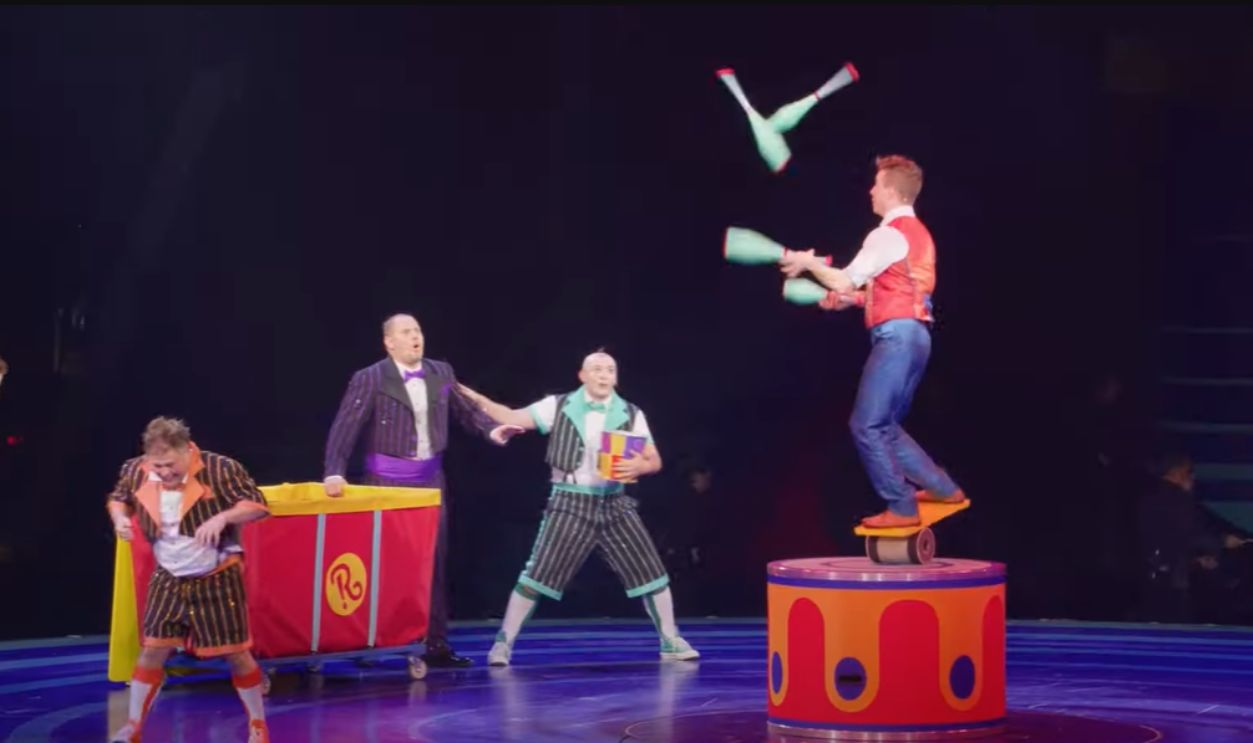 The Greatest Show On Earth Welcome to the Show! | Ringling by Ringling Bros. and Barnum & Bailey
The Greatest Show On Earth Welcome to the Show! | Ringling by Ringling Bros. and Barnum & Bailey

